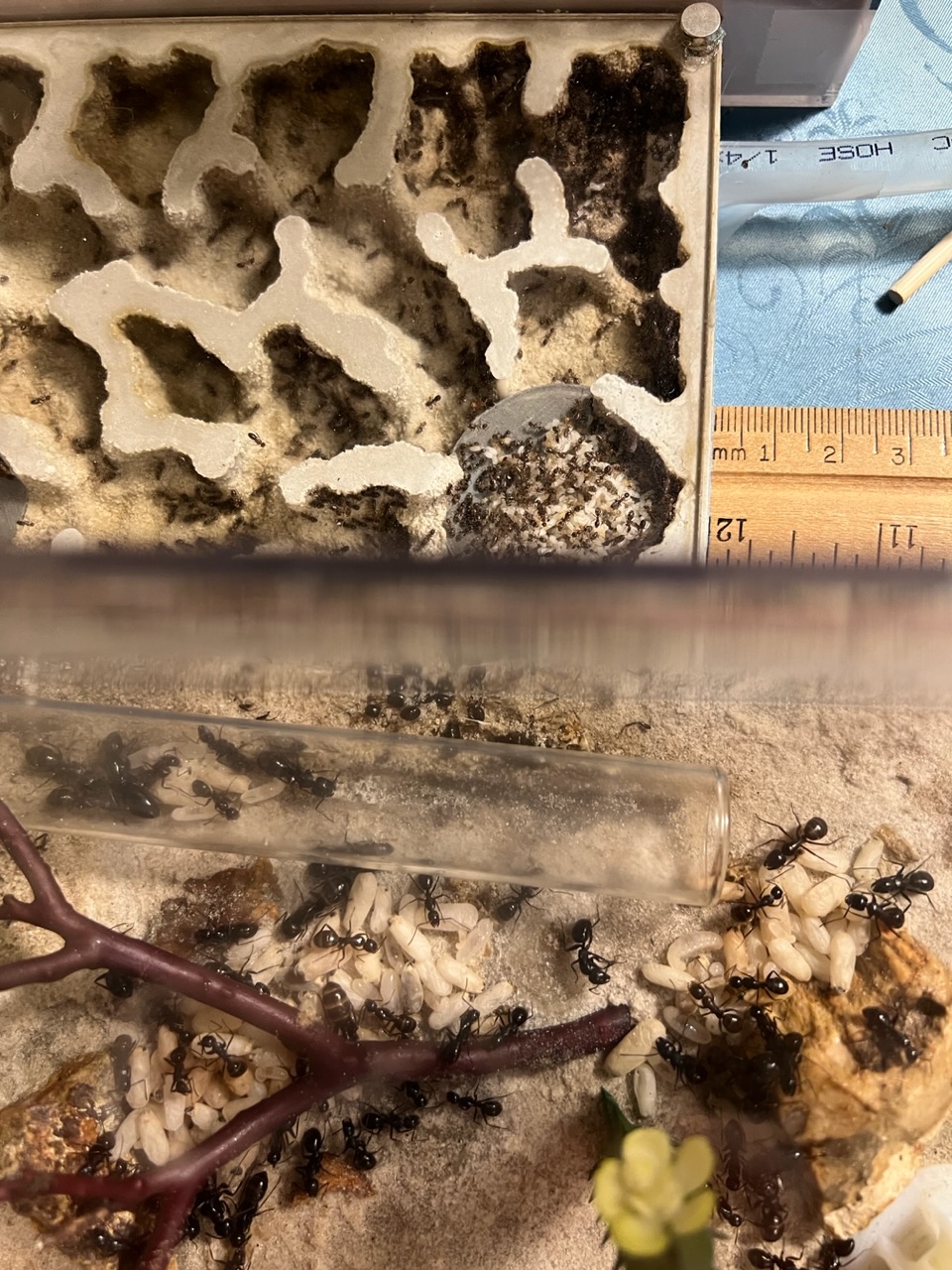Comparison of “small” and “large” ants. Keep in mind that tiny ants are even smaller by far (like only 1.5mm or less), while there are also even larger species at the other extreme.
The ants at the top of the photo are Liometopum occidentale, which is kinda close to Tetramorium size, and the bottom are Camponotus quercicola/laevigatus, very roughly equivalent to C. pennsylvanicus. The ants are at about the same height, as is the ruler.
While large ants are easy to keep contained, small ants are not. They can fit through the tiniest gaps, cracks, holes, etc. And even if a starter colony’s ants show no inclination to escape, the older and more numerous the workers get, the more they will be trying to get out. Under 20 workers is tame, but after 1000 ants act more like a hungry fluid trying to leak out of containers.




















